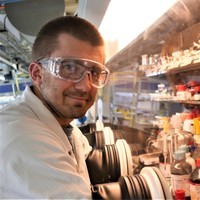"Low-Temperature Photoluminescence of Cesium Lead Bromide Nanostructures" by Dmitry Baranov

Abstract
Semiconductor perovskite CsPbBr3 and a wide-gap zero-dimensional Cs4PbBr6 are two cesium lead bromides that have recently attracted attention due to their light-emitting properties. When sized down to the nanoscale, these compounds are promising for applications such as solution-processed lasers and sources of single photons. Despite the hype, the understanding of their photophysics and its relation to materials structure and stability remains rudimental. At room temperature, light emission of Cs-Pb-Br nanostructures suffers from thermal effects such as broadening and quenching, requiring low-temperature studies. In this talk, I will discuss how the steady-state and time-resolved low-temperature photoluminescence enables to elucidate contributions from quantum confinement, electronic coupling, and energy transfer into the light-emission of three materials: Cs4PbBr6 nanocrystals, Cs4PbBr6-CsPbBr3 nanocrystal heterostructures, and ordered arrays of CsPbBr3 nanocubes. The findings also highlight that the control over the chemical reactivity and stability of Cs-Pb-Br nanostructures is imperative for a rational design of new single nanocrystal emitters as well as collective phenomena such as superfluorescence in nanocrystal solids.
Biography
Dmitry Baranov is a Marie Curie Fellow at the Italian Institute of Technology in Genova, Italy. His research interests nanochemistry, physical chemistry, and spectroscopy.
Seminar sponsored by the Radiation Laboratory
Downloads:
Baranov Seminar Flyer